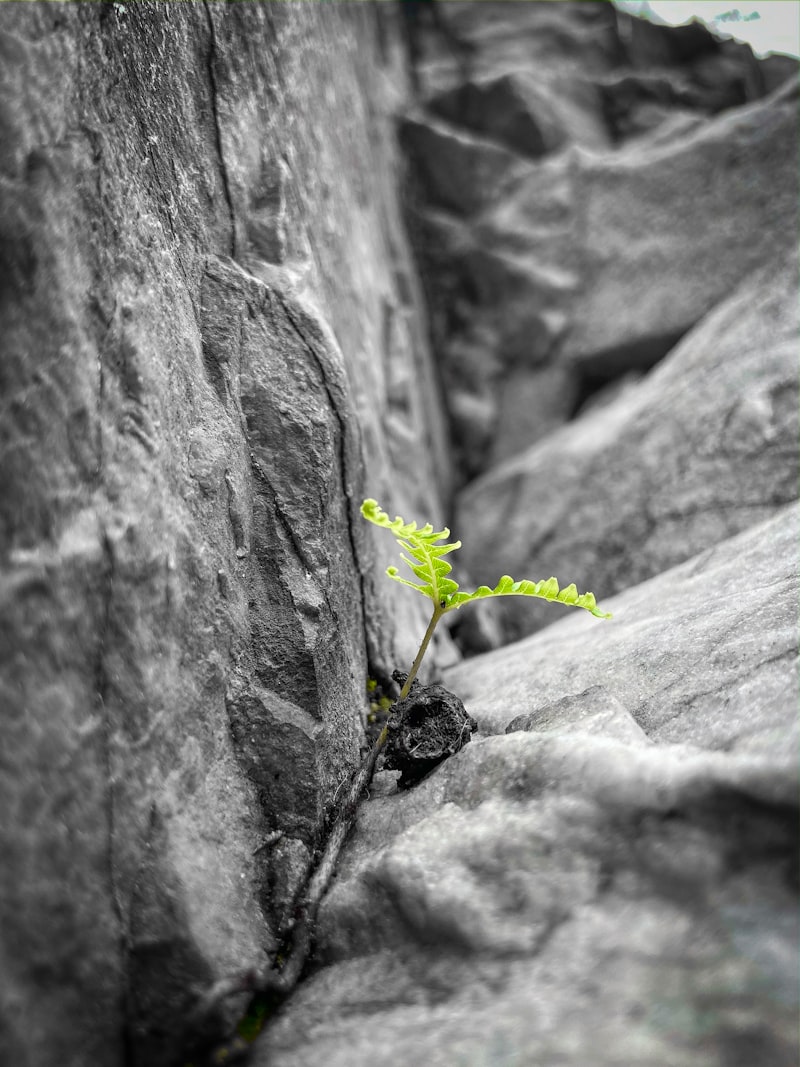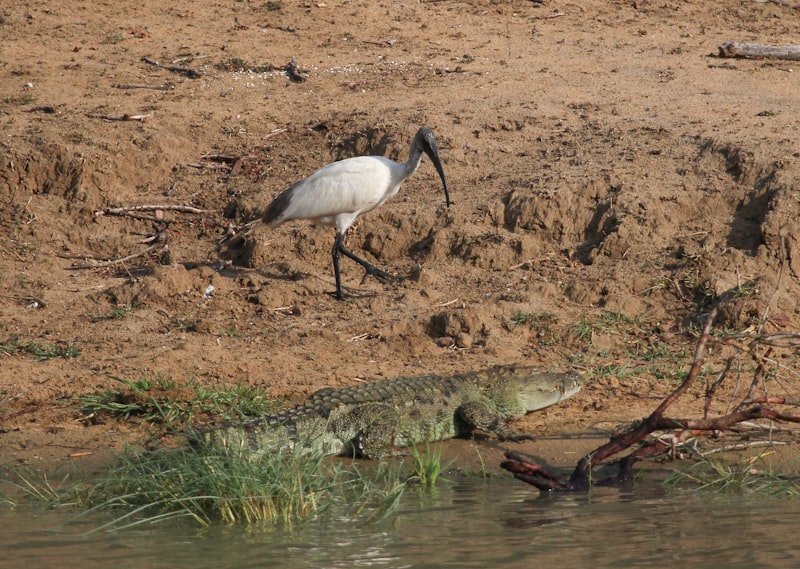Another marvel of adaptation is the Arctic fox, which sports a thick, insulating fur coat that changes color with the seasons. During winter, its fur turns white to blend into the snowy landscape, offering camouflage against predators while also providing warmth in freezing temperatures. In summer, the fur sheds its white hue for a brown or grey coat, adapting once again to the environment’s changing needs.
In the depths of the ocean, the anglerfish employs a strategy that is both ingenious and eerie. This deep-sea predator has a bioluminescent lure dangling from its head, which it uses to attract prey in the darkness. Once unsuspecting fish approach the light, the anglerfish strikes swiftly, demonstrating how adaptation can be both a survival necessity and a formidable hunting advantage in the extreme conditions of the deep sea.
Closer to home, the Australian frilled lizard demonstrates a defense mechanism that startles predators. When threatened, this lizard unfurls a large, frill of skin around its neck, resembling an intimidating collar. The sudden display can surprise predators, giving the lizard precious seconds to escape potential danger.
These examples highlight the ingenuity of nature’s adaptations, where each species evolves to maximize its chances of survival in its unique habitat. From the deserts to the oceans, and even our own backyard, animals continually remind us of the awe-inspiring ways they’ve adapted to thrive against all odds.
Nature’s Resilience Revealed: 10 Animals with Incredible Survival Skills
Nature has bestowed upon its creatures remarkable abilities to survive in the harshest of environments. From the depths of the oceans to the highest mountain peaks, animals exhibit astonishing resilience and adaptability. Here, we delve into the fascinating world of ten animals that showcase extraordinary survival skills.
-
Camel: Known as the ship of the desert, camels can survive for weeks without water. Their ability to store fat in their humps and conserve water makes them perfectly adapted to arid climates.
-
Axolotl: This unique amphibian has the remarkable ability to regenerate entire limbs, including parts of its brain and heart. Found in lakes around Mexico City, the axolotl’s regenerative prowess has made it a subject of extensive scientific study.
-
Honeybee: Living in highly organized colonies, honeybees demonstrate remarkable teamwork and communication. Their complex dance language allows them to convey precise information about food sources to their hive mates.
-
Tardigrade: Often referred to as water bears, tardigrades are micro-animals capable of surviving extreme conditions such as freezing temperatures, radiation, and even the vacuum of space. They achieve this by entering a state called cryptobiosis.
-
Arctic Fox: Inhabiting the Arctic tundra, these foxes have thick fur that changes color with the seasons, providing excellent camouflage. They also have a keen sense of smell and hearing, enabling them to detect prey under layers of snow.
-
Mantis Shrimp: Despite their small size, mantis shrimp possess one of the fastest and most powerful punches in the animal kingdom. They use their specialized claws to strike prey with incredible speed, stunning or even killing it instantly.
-
Elephant: As the largest land mammal, elephants have a strong social structure and impressive memory. They can communicate over long distances using infrasound and are known for their protective behavior towards their young.
-
Antarctic Krill: These small crustaceans play a vital role in the Antarctic ecosystem, forming massive swarms that support a wide variety of marine life. Their ability to filter feed on phytoplankton allows them to thrive in nutrient-rich polar waters.
-
Komodo Dragon: Found on the Indonesian islands, Komodo dragons are the world’s largest lizards. They possess powerful jaws filled with bacteria that can cause lethal infections in their prey, showcasing their unique hunting strategy.
-
African Lungfish: These ancient fish have adapted to survive in seasonal freshwater habitats that often dry out. They can aestivate by secreting a mucous cocoon and burying themselves in mud until conditions improve.
Each of these animals embodies nature’s resilience in its own unique way, adapting to challenges and thriving in diverse environments. Their extraordinary survival skills continue to inspire awe and curiosity, reminding us of the incredible diversity and ingenuity found in the natural world.
Adapt or Perish: How These Animals Thrive in Extreme Environments
Ever wondered how certain animals manage to thrive in some of the harshest environments on Earth? From scorching deserts to icy polar regions, nature has equipped these creatures with remarkable adaptations that ensure their survival against all odds.
Take the camel, for instance. Known as the “ship of the desert,” camels have evolved over millennia to withstand extreme heat and scarcity of water. Their humps store fat, not water as commonly believed, providing them with energy reserves essential for enduring long journeys without food. Their ability to conserve water by producing dry and concentrated urine is another marvel of adaptation in arid environments.
In the opposite extreme, the emperor penguin reigns supreme. Found in Antarctica, the coldest place on Earth, these birds have developed a unique strategy to thrive in temperatures that plummet far below freezing. Their tightly packed feathers and thick layer of blubber act as natural insulation, keeping them warm even in -40°C weather. Additionally, huddling in large groups helps them conserve body heat, demonstrating their remarkable social adaptation.
Moving to the depths of the ocean, the anglerfish illustrates adaptation in an entirely different realm. In the pitch-black abyss where sunlight never reaches, these fish have evolved a bioluminescent lure on their heads to attract prey in the darkness. Their gigantic mouths and expandable stomachs allow them to consume prey larger than their own bodies when food is scarce, ensuring their survival in the harsh conditions of the deep sea.
Back on land, the Arctic fox demonstrates versatility in extreme cold climates. With its thick, white fur coat during winter that blends seamlessly with the snowy landscape, the Arctic fox can remain camouflaged while hunting small rodents beneath the snow. In summer, its fur turns brown, adapting to the tundra’s seasonal changes.
From Deserts to Deep Seas: Discover the World’s Most Adapted Creatures
Consider the camel, often hailed as the “ship of the desert.” With its padded feet and ability to store water in its hump, the camel navigates scorching temperatures and scarce water sources with ease. Its thick coat shields it from the relentless sun, while specially shaped red blood cells prevent dehydration during long journeys across the dunes.
In stark contrast, the barreleye fish reigns in the abyssal depths where sunlight fails to penetrate. Its transparent head and tubular eyes allow it to scan for prey in complete darkness, adapting to an environment where bioluminescent organisms provide the only illumination. This deep-sea marvel has evolved to capture the faintest glimmers of light, ensuring its survival in a realm where few other creatures dare to venture.
Venture further into the frigid waters of Antarctica, and you’ll encounter the Antarctic krill, a small crustacean that forms the cornerstone of the Southern Ocean’s food web. Despite its diminutive size, the krill’s unique adaptations enable it to endure subzero temperatures and months of darkness. An intricate network of internal antifreeze proteins prevents its body fluids from freezing, allowing it to thrive amidst icebergs and shifting sea ice.

From the resilient cockroach scuttling across urban landscapes to the tardigrade, capable of surviving extreme conditions in outer space, these creatures epitomize adaptation at its finest. Each species has carved out its niche through millennia of evolution, embodying the essence of survival against all odds.
As we delve deeper into the diverse ecosystems of our planet, these examples of adaptation remind us of nature’s boundless creativity. Whether scaling mountain peaks or exploring ocean trenches, every environment harbors species uniquely equipped to call it home. Through their remarkable adaptations, these creatures continue to inspire awe and deepen our understanding of the natural world’s limitless diversity.
Survival Masters: Animals That Have Evolved Unbelievable Defense Mechanisms
Imagine a world where survival is not just about strength but also about cunning adaptations. In the animal kingdom, evolution has crafted some of the most astonishing defense mechanisms known to science. From camouflage masters to creatures with biochemical warfare skills, these animals redefine the meaning of survival of the fittest.
One of the most fascinating examples is the mimic octopus, a true artist of deception in the depths of the ocean. This cephalopod doesn’t just change its color; it mimics the shape and behavior of other animals like lionfish or sea snakes. This shape-shifting ability allows it to evade predators and sneak up on unsuspecting prey with remarkable efficiency.
On land, the bombardier beetle stands out with its explosive defense strategy. When threatened, this beetle mixes chemicals stored in its abdomen, triggering a violent chemical reaction that produces boiling hot, noxious spray. This scalding liquid serves as a potent deterrent against predators, showcasing nature’s arsenal of biochemical weaponry.
Moving to the realm of plants, the touch-me-not, or Mimosa pudica, demonstrates a defensive response straight out of a science fiction novel. Upon physical contact, its leaves rapidly fold inward and droop, a reaction triggered by the stimulation of specialized cells. This peculiar behavior startles herbivores and protects the plant from being eaten, proving that defense can be as subtle as it is effective.
In the insect world, the orchid mantis takes camouflage to a mesmerizing level. Resembling a delicate flower petal, this mantis lures unsuspecting prey like butterflies and bees directly into its grasp. Its appearance not only aids in hunting but also helps it blend seamlessly into its floral surroundings, evading predators in plain sight.
Nature’s toolbox of survival strategies is vast and endlessly inventive. Whether through camouflage, chemical warfare, rapid response mechanisms, or mimicry, these animals have honed their defenses over millennia of evolutionary pressure. Their stories remind us that survival isn’t just about brute force but also about adaptability and ingenuity in the face of challenges.
Evolving Against the Odds: 10 Creatures with Jaw-Dropping Survival Strategies
Have you ever wondered how some creatures manage to survive against all odds? Nature is full of incredible examples where animals have evolved unique and jaw-dropping strategies to adapt and thrive in challenging environments. Let’s dive into the fascinating world of 10 creatures with remarkable survival skills.
-
The Axolotl: Known as the “Mexican walking fish,” the axolotl has a superpower – it can regenerate entire limbs, including parts of its brain and spine. This ability makes it a true marvel of evolutionary adaptation.
-
The Mimic Octopus: Imagine an octopus that can impersonate other animals like lionfish, flatfish, and even sea snakes to evade predators. The mimic octopus does just that, using mimicry as its defense mechanism.
-
The Tardigrade: Often called “water bears,” tardigrades are microscopic creatures capable of surviving extreme conditions such as freezing temperatures, intense radiation, and even the vacuum of space.
-
The Pistol Shrimp: This tiny creature (only a few centimeters long) has a disproportionally large claw that it uses to create a cavitation bubble. When the bubble collapses, it produces a sound louder than a gunshot and stuns prey.
-
The Camouflage Cuttlefish: Cuttlefish are masters of disguise, changing their skin color and texture to blend perfectly with their surroundings. They use this skill both to hide from predators and to sneak up on prey.
-
The Mantis Shrimp: With incredible eyesight and powerful claws capable of smashing through shells and aquarium glass, the mantis shrimp is a predator not to be underestimated.

The Komodo Dragon: The largest lizard on Earth, Komodo dragons have a unique venomous bite. Their saliva is teeming with bacteria, causing lethal infections in their prey, which they then track and consume.
-
The Sloth: Sloths may move slowly, but that’s their survival strategy. Their slow metabolism and unique symbiotic relationship with algae on their fur help them conserve energy and stay hidden from predators.
-
The Hairy Frog: Also known as the “horror frog,” this amphibian can break its own bones and push them through its skin to form claws, presumably to fend off attackers.
-
The Immortal Jellyfish: Turritopsis dohrnii, known as the immortal jellyfish, has the remarkable ability to revert back to its juvenile form after reaching maturity. This process can theoretically repeat indefinitely, making it potentially immortal.
These creatures prove that evolution has equipped them with astonishing tools to navigate the challenges of their environments. From regeneration and mimicry to venom and camouflage, each adaptation showcases nature’s creativity in ensuring survival.
Natural Born Survivors: How These Animals Adapt to Changing Climates
Animals are remarkable in their ability to adapt to the ever-changing environments they inhabit. From icy tundras to scorching deserts, nature has equipped certain species with incredible mechanisms to survive and thrive. Understanding how these animals adapt to changing climates offers a fascinating glimpse into evolutionary biology.
Take the Arctic fox, for example. This resilient creature calls the frigid Arctic home, where temperatures can plummet to -50°C (-58°F). To survive in such extreme conditions, Arctic foxes have developed dense fur that not only provides insulation but also changes color with the seasons. In winter, their fur turns white to blend seamlessly with the snow, offering camouflage from predators and prey alike.
In contrast, the camel thrives in the blistering heat of deserts like the Sahara. With temperatures soaring above 40°C (104°F), water scarcity is a constant challenge. Camels have adapted by storing fat in their humps, not water as commonly believed, which serves as an energy reserve. Moreover, their kidneys and intestines are highly efficient at conserving water, allowing them to survive for long periods without drinking.
Further south, the African elephant faces a different set of challenges in the savannas. These majestic creatures have evolved with large ears that serve as natural cooling systems. By flapping their ears, elephants increase blood circulation near the skin’s surface, dissipating excess heat. This adaptation helps them endure temperatures that can exceed 45°C (113°F) during the hottest months.
In the oceans, the leatherback sea turtle demonstrates adaptation to both cold and warm waters. Unlike other sea turtles, the leatherback can regulate its body temperature to some extent due to its unique physiology. This allows it to venture into colder waters, unlike other sea turtles.
Frequently Asked Questions
How do certain animals thrive in environments with limited resources?
Learn how certain animals thrive in environments with limited resources by adapting unique physiological traits and behavioral strategies. Discover their remarkable abilities to conserve energy, find alternative food sources, and employ efficient hunting techniques.
What are some animals with extraordinary camouflage abilities?
Discover fascinating animals that blend seamlessly into their surroundings with extraordinary camouflage abilities. Learn about species like the leaf-tailed gecko, octopus, and walking stick insect, each showcasing nature’s incredible adaptability.
What are examples of animals with exceptional mimicry skills?
Discover examples of animals known for their exceptional mimicry skills, such as the mimic octopus, which can impersonate various marine creatures, and the katydid, a master of blending into foliage with its leaf-like appearance.
How do animals survive extreme climates using physiological adaptations?
Learn how animals adapt to extreme climates through physiological changes, enabling them to thrive in harsh environments. Discover the mechanisms that allow animals to regulate body temperature, conserve water, and obtain energy efficiently in extreme heat or cold.
Which animals have evolved unique defense mechanisms against predators?
Discover fascinating defense mechanisms evolved by animals to evade predators. Learn about unique adaptations like mimicry, camouflage, and defensive weaponry that have evolved over time.



